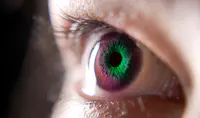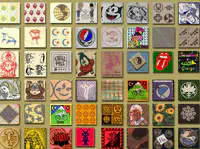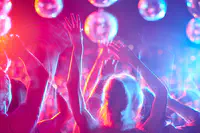The Rate of Young Adult Use of Hallucinogens More than Doubled in Recent Years
This article explores a concerning trend of young people increasingly turning to hallucinogens and psychedelics as their primary drugs of choice, a finding that bodes poorly for the futures of such individuals if they cannot stop using these drugs.

In just a few years, teen and young adult rates of experimentation with powerful drugs like mushrooms and PCP more than doubled, suggesting a concerning shift in youth drug use trends. American families and parents must talk to their sons and daughters about hallucinogens and warn them of the harmful effects attendant with their use.
New Research Raises Warning Signs About America’s Youth
A new report published in Addiction unveils a concerning shift in young adult drug use trends. Conducted by analysts at the University of Michigan Institute for Social Research in Ann Arbor, the research found that between 2018 and 2021, Americans between the ages of 19 and 30 doubled their usage of mescaline, peyote, psilocybin, and PCP.1
In 2018, about 3.4% of Americans between ages 19 and 30 used hallucinogens. But in 2021, 6.6% used such drugs. The trend was true for all types of hallucinogens young people were surveyed about, except LSD. Use of LSD remained the same among young people between 2018 and 2021, at about 4% of young people.
While the research data did not go into why young people are using such drugs at increasing rates, the experts in the field worry that the use of hallucinogens in medicinal settings may be inspiring non-medical, experimental use of the drug. “The use of psychedelic and hallucinogenic drugs for a range of therapeutic uses is increasing, given accumulating yet still preliminary data from randomized trials on clinical effectiveness,” said lead study author Katherine Keyes, professor of epidemiology at Columbia Mailman School of Public Health in New York City. “With increased visibility for medical and therapeutic use, however, potentially comes diversion and unregulated product availability, as well as a lack of understanding among the public of potential risks,” she added.2
The researchers concluded that a significant shift in young adult drug use trends warrants immediate concern. “We will continue to track these trends to see if the increases continue. We need additional research, including about the motives for hallucinogen use and how young adults are using these substances, in order to be able to mitigate the associated negative consequences,” said study co-author Megan Patrick, a research professor at the University of Michigan Institute for Social Research. Critically, the findings suggest parents must get educated about hallucinogens and find ways to talk to their children about them.
What Are the Harms and Risk Factors Associated with Hallucinogens?

Hallucinogenic drugs, sometimes called psychedelics or dissociative drugs, are substances that, when consumed, produce hallucinations that significantly alter one’s perception of the world around them. Such drugs can also bring about rapid and unexplained mood changes, including strong emotional shifts ranging from bliss to fear.3
Some of the short and long-term effects of using hallucinogens include:
- Noticeable pupil dilation is a side effect of most hallucinogens
- Some users may experience panic, paranoia, or bizarre behavior
- Increased body temperature and excessive sweating are both common side effects
- Dry mouth, loss of appetite, inability to sleep, nausea, and vomiting can also occur
- Shifts in the user’s cardiovascular function, such as increased heart rate, hypertension, or hypotension
- Hallucinogens produce severe alterations in one’s sense of time, space, depth, and all other perceptions
- Users sometimes experience physical tremors, issues with muscular coordination, and changes in reaction time
- Another side effect of using hallucinogens is fear-based and nerve-based emotional responses, such as anxiety, panic reactions, and even paranoia in the case of some chronic users
Someone under the influence of hallucinogens may be detached from reality, and there’s always the risk that they may stay that way. Also, people who use such drugs always risk having a “bad trip,” described as a highly disturbing drug use experience that could prompt some psychosis.
Addiction Treatment Should Be Pursued if a Loved One Can’t Stop Using on Their Own
The soaring use of hallucinogenic drugs among the American youth population is concerning. Such drugs alter a person’s perception of reality, making all aspects of life – from driving a car to operating machinery to cooking – more dangerous. Perhaps most concerning is the risk for addiction posed by any drug that creates a mind-altering effect, hallucinogens included.
Young people are more likely to take risks, more likely to succumb to peer pressure, and more likely to engage in potentially dangerous activities. If you know someone who is using hallucinogens and cannot stop using them alone, please help that individual seek treatment at a qualified drug rehab center. Please don’t wait until their drug use leads to a life-altering or life-ending incident.
Sources:
-
Addiction. “Hallucinogen use among young adults ages 19–30 in the United States: Changes from 2018 to 2021.” Addiction, 2023. onlinelibrary.wiley.com ↩︎
-
USNews. “Young Adults’ Use of Hallucinogens Like Mushrooms, PCP Doubled in a Few Years: Study.” U.S. News, 2023. usnews.com ↩︎
-
NIDA. “Psychedelic and Dissociative Drugs.” National Institute on Drug Abuse, 2023. nida.nih.gov ↩︎






 ®
®